Comment: Why we should all take a moment to remember Tom Simpson
On Thursday July 13, 1967, British cyclist Tom Simpson died near the top Mont Ventoux during the Tour de France. Fifty years on, his life will be remembered by lots of people in lots of different ways. This is why I think it’s important that Simpson, his career and his death, should be remembered
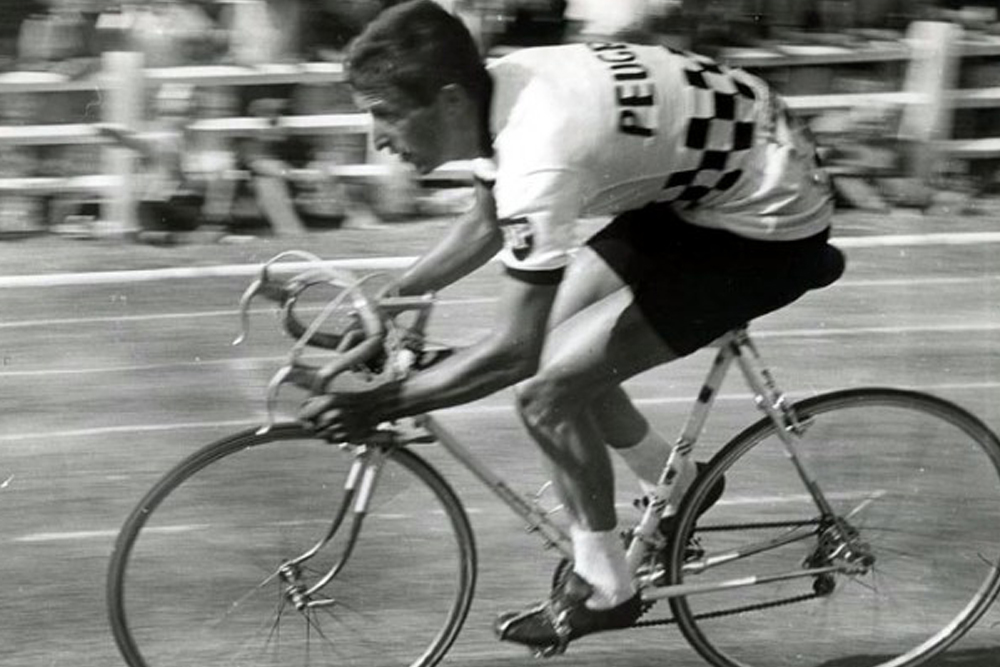
All photos: Cycling Weekly Archive

Fifty years ago today a young Tom Simpson died while racing the Tour de France, collapsing on the higher slopes of Mont Ventoux from the combined effects of heat, exhaustion and having alcohol and drugs in his system. He died while being transferred to hospital. It’s a well-known story that’s been told many times.
The Tour de France didn’t mark or remember his death at the start in Pau today, and this year’s route isn’t going to Mont Ventoux.
Organiser ASO has understandably said it didn’t want the Tour to become a pilgrimage. But for his death to go unmarked by the race in which he died feels a little... uncaring. His daughter Joanne will be marking the anniversary at his memorial on Mont Ventoux which she helped to refurbish last November.
>>>> Watch the new steps to the Simpson memorial being completed
There are many reasons Tom Simpson should be remembered, and his drug use is just one of them.
Each time we publish an article in praise of Simpson or simply remembering him and his achievements we get the inevitable correspondence – not to mention comments in the section below. ‘He was a cheat!’. ‘It’s hypocritical to laud someone who took drugs back then and vilify the likes of Lance Armstrong’ etc, etc.
Well, there are lots of reasons that Simpson is viewed differently, not just by Cycling Weekly but by other publications, fans and riders past and present. The first anti-doping tests at the Tour de France took place in 1966; the Olympic movement followed suit two years later at the Winter Olympics in Grenoble.
Get The Leadout Newsletter
The latest race content, interviews, features, reviews and expert buying guides, direct to your inbox!
But the introduction of what were fairly rudimentary tests didn’t flip a switch and change attitudes, morals, opinions and behaviour overnight. The attitudes of many back then, that doping is part and parcel of professional sport, were deeply entrenched and can sadly still be seen in very small pockets of the sport today.
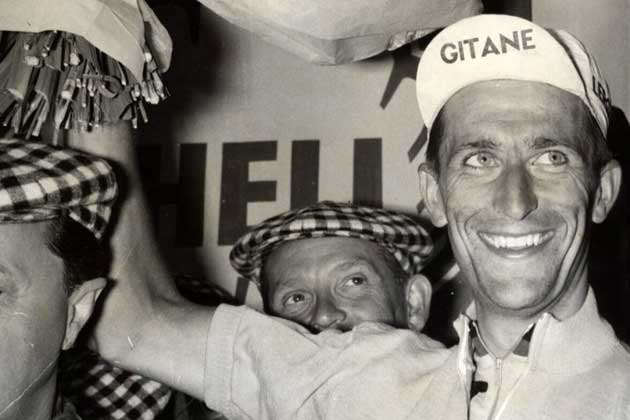
Even once these tests did come into being, they were sporadic and regularly overturned. Consider Merckx’s at the 1969 Giro d’Italia, when a one-month suspension was overturned by cycling’s governing body simply to ‘give him the benefit of the doubt’.
There was little appetite or reason to enforce these new rules and potentially damage the sport and its riders. Doping was something that, at this time, was poorly understood, carried out by individuals and their ‘helpers’, and wasn’t exactly perceived as a wrongdoing.
We may not like the fact this happened back then, but to view drug taking in the context of today is to completely fail to understand the sport, its environment and how it has changed over the decades. No one is saying it’s right. It’s just how it was. Remember, Simpson even showed a journalist the drugs he was taking that day.
Poor anti-doping governance continued in to the 1990s; let's be honest, it took the formation of the independent World Anti-Doping Agency (WADA) in 2000 to really make anti-doping a serious, respected and meaningful movement. That's one of the reasons it has taken so many generations to change attitudes.
Therefore to put Simpson in the bracket of Armstrong, Bjarne Riis et al. makes no sense. Simpson was racing at a time when the sport had few rules, and little moral compass outside of its own unwritten rules that did little more than reflect the wishes of the more powerful people in the sport.
Moving on. Simpson was a huge talent. A road race world champion, winner of Milan-San Remo, Bordeaux-Paris, Paris-Nice and Il Lombardia. His achievements, having moved abroad to Ghent knowing little of what was to come, were groundbreaking.
Brian Robinson had in fact paved the way in 1955 when he finished 29th in the Tour riding for the British national team. The Yorkshireman’s ride proved that British riders could perform on the biggest stage. His career left the door ajar, before Simpson kicked it open and bolted through.
His talent, charisma and leadership inspired others. One of the few stories Keith Butler (a man very modest about his riding achievements) has told me is the one of the 1965 World Champs. His sole job that day was to mark Jacques Anquetil. It was a small but important role and one that helped Simpson win. Being part of that winning team clearly meant a lot.
>>>> Tom Simpson: A life in pictures
There are few riders who come along and have such an effect on the sport and those around them. Even today when the pathway to Europe is a feasible option for a talented young British rider and we come to expect a British Tour win, there are really only a handful who hit the heights winning Grand Tours, Monuments and world titles.
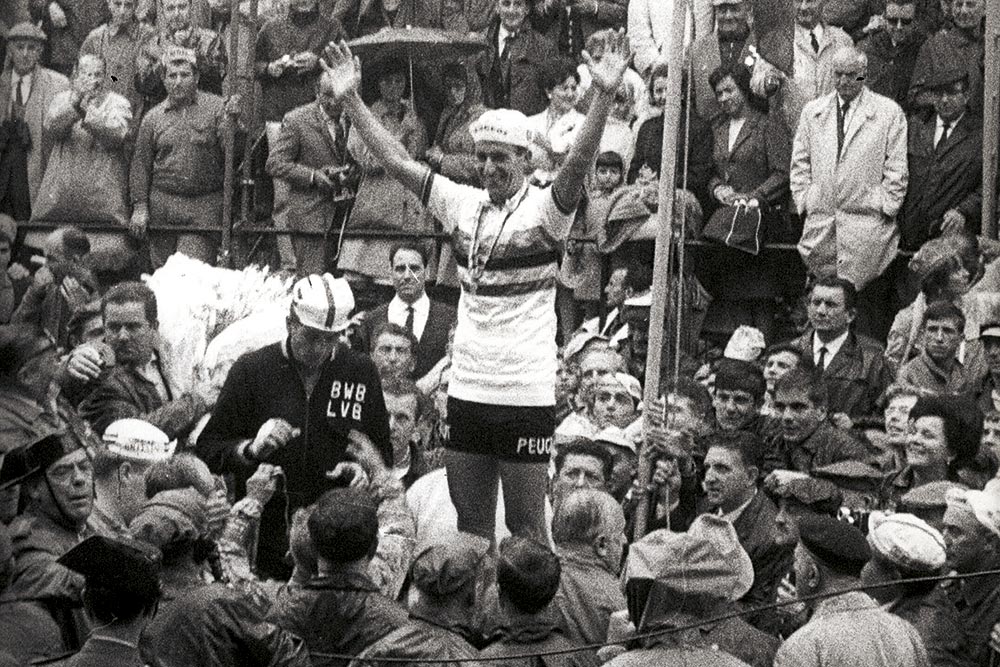
Back then it was unimaginable, but Simpson did it, and he did it with a smile on his face and a personality that endeared him to his fans back home and the traditional French public. Major Tom, as he was known, was one of cycling’s first superstars.
But all that was lost overnight, and everything changed.
His death was devastating to his family and friends and dealt a huge blow to cycling in the UK. Such was Simpson’s status and presence that, Barry Hoban’s Tour stage wins aside, success abroad ceased almost immediately.
The door to racing in Europe seemed to have closed again and only opened sporadically when similarly talented individuals like Robert Millar, Chris Boardman and David Millar came along.
Simpson's death did to cycling then what losing lottery funding would do today.
His death was a tragedy on both a personal and sporting level. He was a victim of his own ambition and of a sport that had questionable morals at best, few rules and little or no duty of care.
Simpson played by the unwritten rules, desperate to win and perhaps to be adored. He was a victim of the sport that didn’t care about or understand the risks and paid the ultimate price. His story is as relevant today, if and when the sport ever stops and asks itself, are we doing enough?
That’s why we need to remember.

Thank you for reading 20 articles this month* Join now for unlimited access
Enjoy your first month for just £1 / $1 / €1
*Read 5 free articles per month without a subscription

Join now for unlimited access
Try first month for just £1 / $1 / €1

Editor of Cycling Weekly magazine, Simon has been working at the title since 2001. He fell in love with cycling 1989 when watching the Tour de France on Channel 4, started racing in 1995 and in 2000 he spent one season racing in Belgium. During his time at CW (and Cycle Sport magazine) he has written product reviews, fitness features, pro interviews, race coverage and news. He has covered the Tour de France more times than he can remember along with two Olympic Games and many other international and UK domestic races. He became the 130-year-old magazine's 13th editor in 2015.
-
 Trek, State and Specialized raise bike prices while other brands limit US releases — Is this just the beginning?
Trek, State and Specialized raise bike prices while other brands limit US releases — Is this just the beginning?As tariffs hit, the bike industry is forced to adapt, whether through price increases, limited releases, or a restructuring of supply chains
By Anne-Marije Rook
-
 How I got my non-cyclist friend hooked on riding bikes — and how you can, too
How I got my non-cyclist friend hooked on riding bikes — and how you can, tooWith a little bit of gentle guidance, “bikes aren’t my thing” can turn into “when’s our next ride?”
By Marley Blonsky
-
 Sir Bradley Wiggins unveils Tom Simpson memorial in County Durham
Sir Bradley Wiggins unveils Tom Simpson memorial in County DurhamNew monument to British cyclist Tom Simpson is unveiled in Haswell during the 50th anniversary year of the rider's death on Mont Ventoux
By Nigel Wynn
-
 Tom Simpson 1937–1967: A life in pictures
Tom Simpson 1937–1967: A life in picturesThis year marks the 50th anniversary of Tom Simpson's death on Mont Ventoux on July 13 1967 while riding the Tour de France. This gallery from the archives tells of the story of Tom Simpson's decorated life and career
By Jack Elton-Walters
-
 Bradley Wiggins drops in unannounced to a Doncaster social club
Bradley Wiggins drops in unannounced to a Doncaster social clubSir Bradley Wiggins paid a visit to the Bircotes and Harworth Sports and Social Club to take a look at the Tommy Simpson memorabilia
By Nigel Wynn
-
 Tom Simpson’s World Championships win: 50 years on
Tom Simpson’s World Championships win: 50 years onPaired with exclusive photography from the Cycling Weekly archive, Chris Sidwells looks back on the year his uncle Tom Simpson won the world title
By Chris Sidwells
-
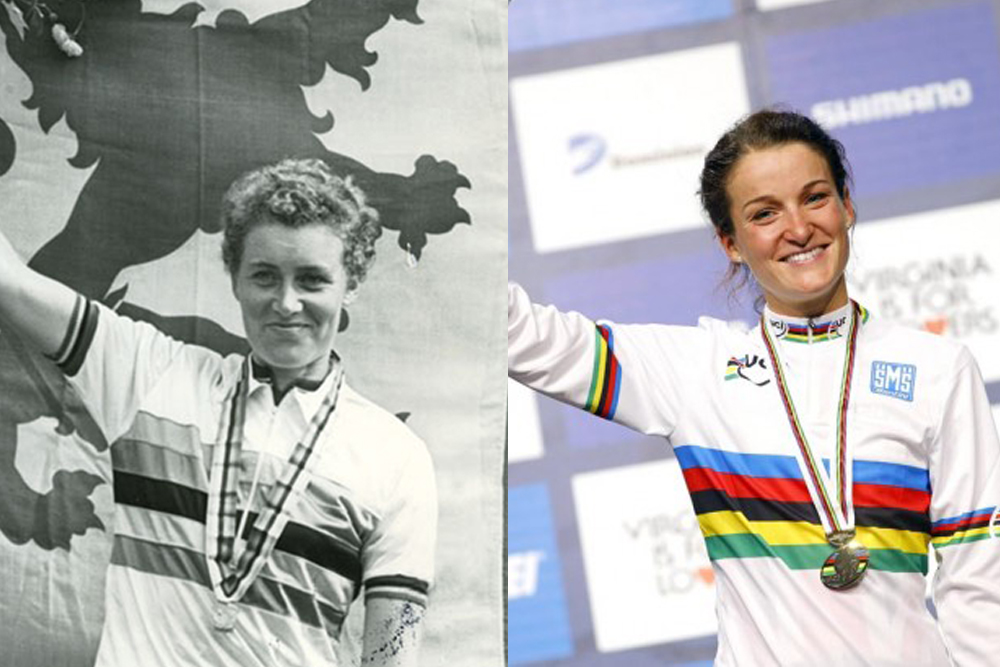 From Burton to Armitstead: Britain's road race world champions
From Burton to Armitstead: Britain's road race world championsIn celebration of Lizzie Armitstead's win in the World Championships, we look at the six British professional riders who have worn the rainbow stripes on the road, and give a special mention to Britain's two amateur World Champions
By Jack Elton-Walters
-
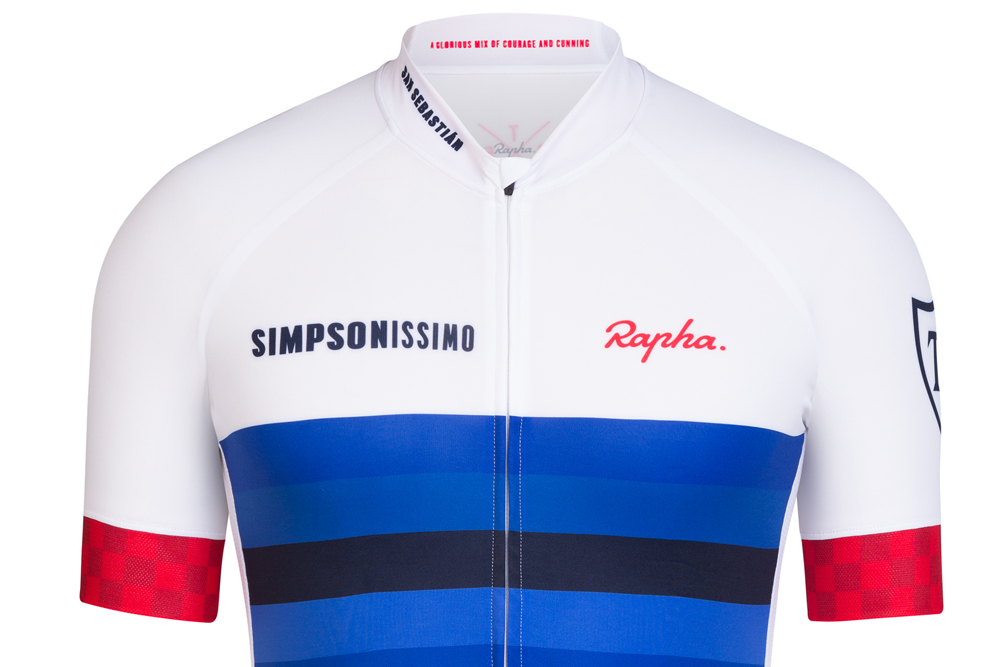 Limited edition Rapha Tom Simpson jersey already selling on eBay for £205
Limited edition Rapha Tom Simpson jersey already selling on eBay for £205Originally retailing at £130, one eBay auctioneer is set to make a quick buck by flogging his limited edition Rapha Tom Simpson jersey for £205
By Stuart Clarke
-
 Icons of cycling: Tom Simpson's Peugeot chequered jersey
Icons of cycling: Tom Simpson's Peugeot chequered jerseyThe word ‘chequer’ is derived from the Persian ‘shah’ or king, so it’s entirely appropriate that the Peugeot jersey was worn by cycling royalty in its 23-year existence
By Simon Smythe
-
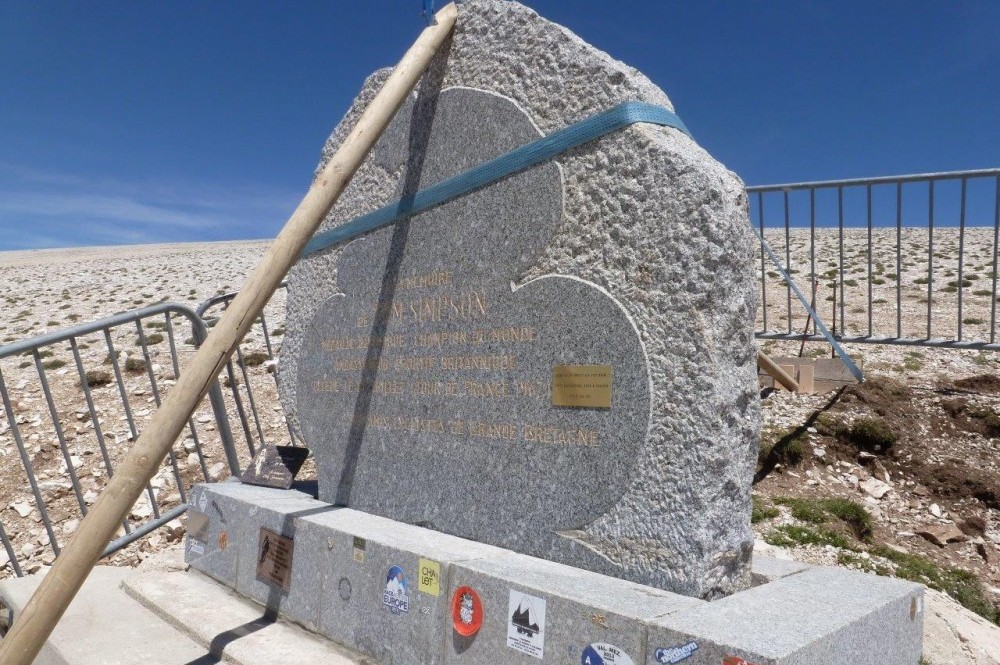 Work begins to restore Tom Simpson Memorial on Mont Ventoux
Work begins to restore Tom Simpson Memorial on Mont VentouxTom Simpson's memorial stone re-erected after being blown over in gale-force winds on Mont Ventoux. Photos by Chris Hodgson
By Chris Sidwells